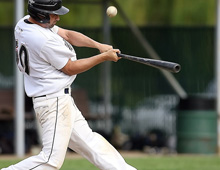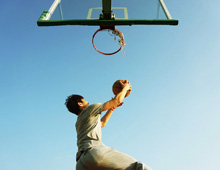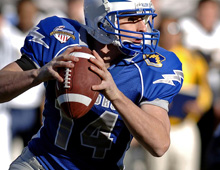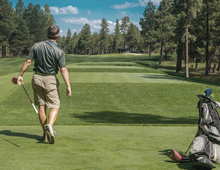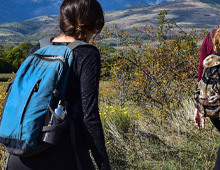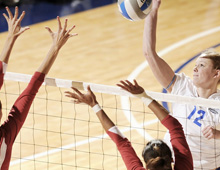Secure Support: Stop Your Knee Brace from Sliding Down

" Secure Support: Stop Your Knee Brace from Sliding Down
1. Understandig the Causes of Knee Brace Slippage
2. The Impact of Slipping Knee Braces
3. How to Keep A Knee Brace from Sliding Down?
4. The Role of a Customized Knee Brace
5. Conclusion
6. FAQs – Addressing Common Concerns of Knee Brace
The journey of securing knee brace support is not just about preventing an inconvenient wardrobe malfunction; it's about ensuring optimal support for your knee joint. Whether you're a fitness enthusiast, an occasional jogger, or someone dealing with a post-injury recovery, a well-fitted knee brace can be your unsung hero.

Understanding the factors behind knee brace slippage is the first step in defying its gravitational pull. Let's dissect the elements contributing to this pesky problem.
● Incorrect Sizing
Choosing a knee compression sleeve is not a one-size-fits-all affair. Much like finding the perfect pair of shoes, the right fit is crucial. Incorrect sizing can lead to discomfort, hindered movement.
● Poor Strap Adjustments
Straps play a pivotal role in keeping your knee brace in place. Imagine them as the support crew ensuring everything stays snug. However, poor adjustments can throw off this delicate balance, making your knee brace more of a liability than an asset.
● Material and Design Issues
Not all knee braces are created equal. The materials and design play a significant role in their effectiveness. Some materials may lack the necessary grip, while certain designs may contribute to slippage.
● Discomfort and Reduced Effectiveness
The discomfort caused by a slipping knee pad goes beyond a mere inconvenience. It affects the effectiveness of the brace itself, rendering it less capable of providing the support your knee needs.
● Increased Risk of Injuries
Slipping knee braces can lead to unexpected twists and turns, increasing the risk of injuries. A anti-slip knee support that stays put is your ally in preventing unnecessary strains and sprains.
● Hindrance to Performance in Sports
For athletes, a slipping knee brace is not just a distraction; it's a hindrance to optimal performance. Whether they're on the soccer field or the basketball court, the last thing they need is a brace doing its own interpretive dance.
So how to make knee supports with grip?
How to Keep A Knee Brace from Sliding Down?
● A. Sizing Matters
The first step to a secure knee brace experience is embracing the importance of accurate measurements. Much like a tailored suit, a knee brace should fit like a second skin. Let's delve into the nitty-gritty of sizing and discover some tips for choosing the perfect fit.
Importance of Accurate Measurements
Finding the right size is not just about comfort; it's about the effectiveness of your knee brace. An oversized brace may lead to slippage, while one too tight could compromise blood circulation. Accurate measurements ensure your knee brace becomes a seamless extension of your body.
Tips for Choosing the Right Size
1. Measure Knee Circumference: Use a flexible tape measure to get the circumference of your knee at its widest point. This provides a baseline for selecting the appropriate size.
2. Consider Activity Level: Different activities may demand variations in sizing. If you're into high-impact sports, a snugger fit might be preferable for extra stability.
3. Check Manufacturer Guidelines: Each brand may have its own sizing chart. Don't hesitate to consult the manufacturer's guidelines for accurate sizing information.
● B. Strap Adjustment Techniques
Think of the straps on your knee brace as loyal assistants, ensuring everything stays in place. Mastering proper strap placement and tension adjustment is key to unlocking maximum support.
Proper Strap Placement for Maximum Support
1. Above and Below the Knee: Ensure the upper and lower straps sit comfortably above and below the knee joint. This helps distribute pressure evenly.
2. Avoid Overlapping: Straps should not overlap, as this may cause discomfort and uneven pressure distribution.
Adjusting Tension for a Snug Fit
1. Snug but Not Constricting: Straps should be snug enough to prevent slippage but not so tight as to impede blood flow. Finding the balance ensures both comfort and support.
2. Recheck During Activity: Straps may need occasional readjustment, especially during activities with varied movement. A quick check ensures consistent support.

● C. Material and Design Considerations
Choosing the right material for your knee brace is akin to selecting the ideal tool for a task. We'll explore the realm of materials with anti-slip properties and shed light on knee braces with enhanced grip features.
Evaluating Materials for Anti-Slip Properties
1. Silicone Grips: Knee braces with silicone grips are excellent for anti-slip properties. Silicone creates a secure interface with your skin, minimizing the chances of slippage.
2. Neoprene Excellence: Neoprene, a versatile material, not only provides excellent support but also offers a degree of grip. It's a popular choice for those seeking a balance between comfort and stability.
Choosing Knee Braces with Enhanced Grip Features
1. Textured Surfaces: Some knee pads come with textured surfaces designed to grip the skin effectively. These textures act as anchors, reducing the likelihood of unwanted movement.
2.Anti-Slip Strips: Modern anti-slip knee support often incorporate anti-slip strips strategically placed to enhance grip. These strips ensure the brace stays in place even during rigorous activities.

Tailoring Solutions for Specific Sports and Activities
Every sport places different demands on the knees, and a one-size-fits-all approach may fall short. Explore knee braces specifically designed for your preferred activities, whether it's running, basketball, or weightlifting.
11.Enhanced Support: Tailored solutions offer targeted support, addressing specific areas of vulnerability and ensuring optimal stability.
2.Improved Performance: Whether you're an athlete or a casual enthusiast, a personalized knee brace can contribute to improved performance by minimizing distractions and discomfort.
As knee brace manufacturer, we provide professional private label custom knee support solutions for your brand. Feel free to contact us and get your free quote.
Wearing your knee brace around the clock might sound tempting, but like a superhero needing a break, even knee braces need some downtime. Here's the lowdown on duration and comfort:
1.Explaining the Recommended Duration
While it might feel like your knee brace is offering a warm embrace, it's wise to give your knee some freedom. Aim for intervals of wear, allowing your knee to breathe and preventing potential discomfort.
2.Tips for Comfortable Extended Wear
If your knee brace is becoming a second skin (figuratively, of course), ensure it's not too tight. Periodically check for any signs of irritation and, when possible, treat your knee to moments of brace-free liberation.
Think of your knee brace as a supportive friend, not an overbearing one. Striking the right balance between snug and comfy is the key. Here's your guide to optimal tightness:
1.Providing Guidelines on Optimal Tightness
Your knee brace should offer a secure hug, not a vice grip. Adjust the straps so they provide stability without turning your knee into a sausage casing. Finding that sweet spot ensures both support and flexibility.
2.Avoiding Excessive Pressure and Potential Issues
While a snug fit is desirable, too much pressure can lead to discomfort and potential issues. If your knee brace feels like it's plotting a rebellion, it might be time for some strap adjustments.
Just as athletes have their favorite sneakers, they also have preferred knee braces tailored for specific sports. Let's explore the world of specialized support:
1.Highlighting Specialized Braces for Different Activities
Yes, there are knee braces for every kind of sports enthusiast – from runners to weightlifters. These specialized braces offer targeted support, ensuring your knees are equipped for the specific demands of your chosen activity.
2.Ensuring the Right Support for Diverse Needs
Whether you're dribbling on the basketball court or perfecting your downward dog in yoga, there's a knee brace designed to have your back (or knee). Choose a brace that complements your activity for optimal support.
Consider knee braces your trusty sidekick on the road to recovery. Here's the inside scoop on their role in post-injury rehabilitation:
1.Discussing the Role of Knee Braces in Rehabilitation
Knee braces aren't just for show; they play a pivotal role in providing stability during the delicate phase of post-injury recovery. They act as a supportive ally, aiding your knee as it regains strength.
2.Recommendations for Post-Injury Support
If you've recently bid adieu to crutches but still want that extra layer of support, a knee brace is your answer. Consult with your healthcare provider for personalized recommendations based on your injury and recovery progress.



